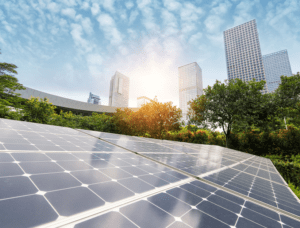Improving the Energy Efficiency of Buildings: It’s Time for Industry to Respond to Climate Change
Credit to Author: Tom McDonald| Date: Fri, 13 Mar 2020 13:08:18 +0000
Tom is the Business Development Director, Airmaster Australia Pty Ltd. Airmaster is a Master-level BMS EcoXpert .
.
It’s been less than a year since the publication of “Compound Costs: How Climate Change is Damaging Australia’s Economy,” a Climate Council report highlighting the short- and long-term economic threats facing the continent.
According to the Climate Council, climate change-induced macroeconomic shocks could lead to painful market corrections and trigger serious financial instability, with projected impacts ranging from reduced agricultural yields and property damage, to infrastructure and commodity price hikes.

Australia’s financial regulators have already acknowledged that climate change is a central concern for the economy and financial stability before the onset of the unprecedented 2019 bushfires that were raging out of control within six months of the Climate Council report being issued.
As a Schneider Electric EcoXpert Partner, Airmaster is in the business of keeping the wheels of the Australian industry turning in the face of the conflagration. As experts in building automation and building management systems, I doubt if anyone at Airmaster has ever crossed the path of a customer or partner who isn’t interested in lowering building operating costs.
Partner, Airmaster is in the business of keeping the wheels of the Australian industry turning in the face of the conflagration. As experts in building automation and building management systems, I doubt if anyone at Airmaster has ever crossed the path of a customer or partner who isn’t interested in lowering building operating costs.
Energy cost is one of the largest opex line items to industry. Reducing its use and eliminating its wastage not only makes business more competitive, but it also has a beneficial effect on reducing carbon emissions and their effect on the environment. Even before we start talking about the transition from fossil-fuel based generation to renewables.
However, the high ideals of energy efficiency and low carbon operations often result in no more than a conversation. Even when the business case is proven and an energy efficient design makes it through to the construction stage, the pressure on capital projects has become so great and the margins so constrained that equipment in the original specification is often arbitrarily replaced by building contractors. While it might meet the “design intent,” the end result may be a long way from the aspirations of the architects, system designers and the end customer.
In this not uncommon scenario, modern, energy efficient infrastructure, and the means to operate it with equal efficiency have ended up on a metaphorical cutting room floor. I’ve heard many stories of other contractors that removed energy saving components from a design with the stroke of a pen and replaced them with some pale imitation without ever discussing the impact of these changes with the customer. This sort of product substitution represents the worst justification for system re-design on the fly.
It is important that we develop construction practices that consistently deliver on the potential that energy efficient infrastructure holds. Buildings, especially commercial buildings, with their power-hungry air conditioning systems, are major consumers of energy. They are also, therefore, major contributors to CO2 emissions and…(you guessed it), climate change.
Australia is not on track to meet its 2030 reduction target. If the whole world followed the example of this country, it would be heading for at least 3°C to 4°C of global warming. In short, this would be catastrophic, forcing us to face greater uncertainty with weather patterns and their consequences. Without doubt, this would be bad for business and a challenge to international competitiveness.
Climate change and required efficiency gains can be difficult topics – especially if you are not sure where to begin or how to justify the required budget. If you are interested in making a change at your company, feel free to talk to me, or one of my colleagues at Airmaster. We will help you create a roadmap of critical steps to ensure you meet your efficiency goals, deliver a quick return on investment, and directly aid in the fight to reverse climate change.
The post Improving the Energy Efficiency of Buildings: It’s Time for Industry to Respond to Climate Change appeared first on Schneider Electric Blog.
